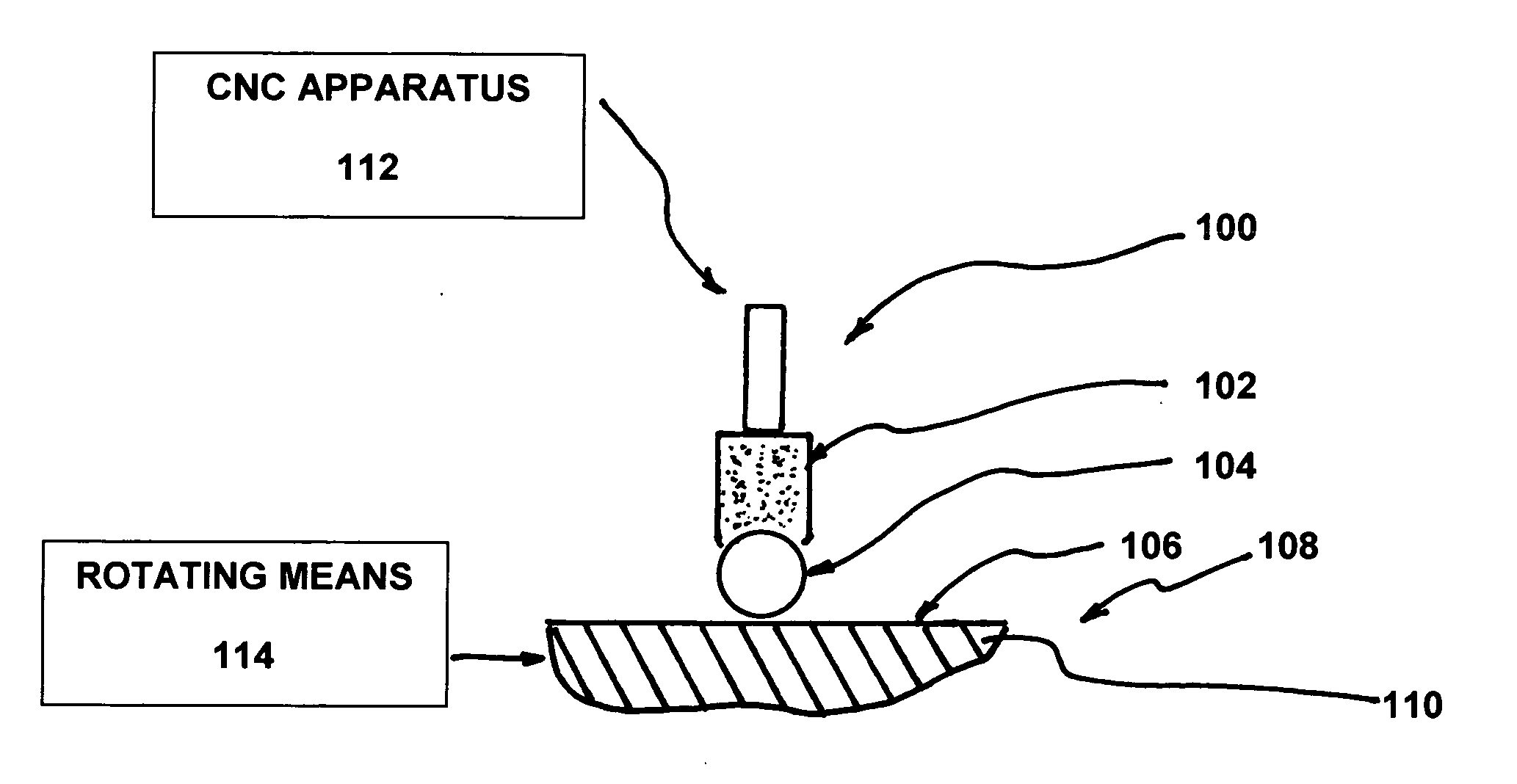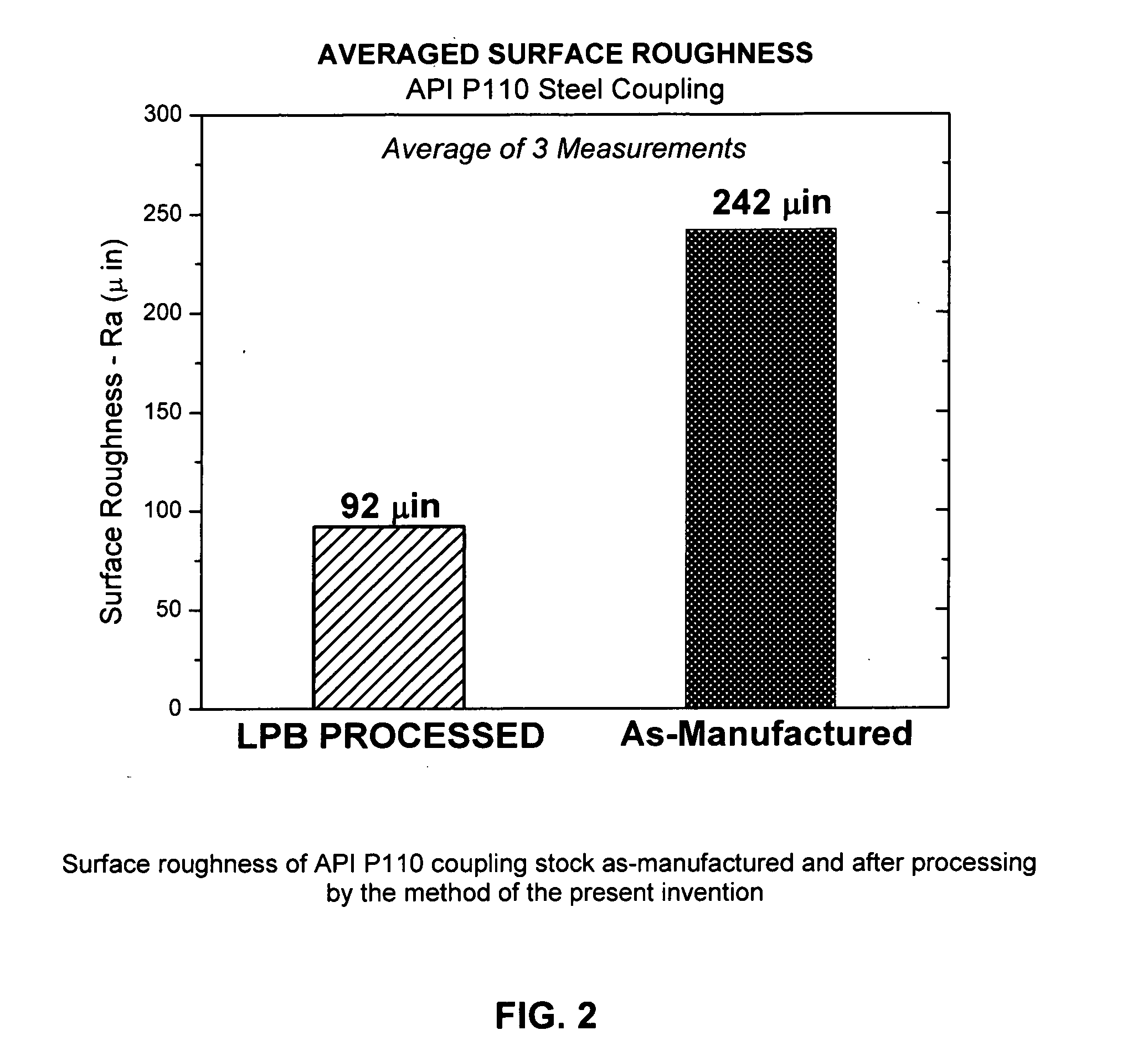In the recovery and distribution of fossil fuels and the operation of
petrochemical refineries and other types of chemical plants, failure of metallic components is often a result of the combination of stress as well as one or more corrosive elements, such as
hydrogen sulfide, H2S,
ammonia, or
chlorine, to which the component is exposed in service.
The elevated temperatures, pressures, and applied stresses, either static or alternating, to which such components are exposed, contribute to their degradation and the rate at which corrosive related failure processes occur, especially SCC and
corrosion fatigue.
The life of metallic components in these environments and applications is often limited, and premature component failures
restrict production and increase
operational costs.
In
oil and natural gas well drilling to recover fossil fuels, the depth to which drilling can be performed is limited by the materials available for the
drill pipe, tubing, and casing, generally referred to as Oil Country Tubular Goods (OCTG).
In
offshore drilling, the material strength of the OCTG and
drill components limits the depth of water and thus the distance from
shore that is accessible.
Therefore, the strength of metallic material that can be used in a SCC prone environment, such as environments that Fuel
Recovery Components often operate in, is limited.
The failure of Fuel
Recovery Components as well as components used in a wide variety of
chemical plant applications generally results in major economic loss, if not catastrophic damage impacting public safety.
It is well known that failure of such metallic components is most commonly caused by the mechanisms of SCC or fatigue.
Fatigue failures occur under the influence of alternating applied stress, generally accompanied by a steady
mean stress, and often originate from a surface flaw such as a
corrosion pit, SCC, or scratch.
All of these
chemistry or
coating-based methods have limitations, or have shown limited improvement in performance at relatively high implementation costs to the end-user.
Components formed from
corrosion resistant alloys are relatively expensive and often are not cost effective.
Paint and coatings will peal, wear away, or be scraped off eventually exposing the surface to the corrosive environment, and generally cannot be renewed on the casing and components installed down in the well.
Reducing the strength of the material and designing for lower applied stresses provides a long-term solution but limits performance, as noted above.
However, because it is a random
impact process,
shot peening severely cold works the surface in order to cover the surface with
impact dimples and produce the compressive layer.
The beneficial compressive residual stresses in the highly cold worked surface are then known to be susceptible to rapid
thermal relaxation at relatively lower service temperatures and is therefore unacceptable for certain components.
Further, the relatively shallow cold worked residual compression layer is also susceptible to loss of compression by tensile overload in
work hardening materials, again making the method unacceptable for certain components.
Shot peening also produces a roughened dimpled surface that makes it more difficult to detect a crack or flaw using nondestructive inspection (NDI) methods such as ultrasonic and
eddy current means, again making it unacceptable for certain applications.
LSP can produce relatively deep (˜1 mm) compression, but is prohibitively expensive for components having large surface areas needing treatment.
Further, LSP requires an ablative
coating to be applied along the surface of the component being treated that generates post-
processing debris that must be removed, thereby adding additional cost.
In addition, LSP requires repeated shocking cycles to achieve a 1 mm deep compressive layer, thereby adding additional cost and
process time.
Also, LSP has been known to damage the surface in three ways that have been shown to contribute to component failure.
First, internal
cracking can occur due to superposition of echoing shock
waves.
Second, LSP shock
waves are known to cause twinning in some crystals, like in
titanium alloys, that are associated with subsequent fatigue
crack initiation.
Third, LSP is known to produce
laser burns and local areas of residual tension that occur if the ablative
coating is breached so that the
laser strikes the
bare metal surface;
surface tension from such burns will exacerbate SCC.
Accordingly, components treated using LSP often require post-
processing inspection that can significantly increase cost and
processing time.
Components that have been damaged by the LSP process often require additional processing or must be scrapped, thereby further increasing cost and processing time.
Further, denting of the surface at each shock point by LSP may also require refinishing operations.
Like
shot peening, the dented surface reduces the effectiveness of
eddy current and ultrasonic NDI techniques that are vital to monitor the integrity of critical components.
Cold working, however, is well known to increase the susceptibility of metals to SCC.
However, such processes increase processing time and cost and may be difficult to perform on certain components.
Both SCC and fatigue failures are well known to initiate from very small surface irregularities such as surface cracks, small crevices, flaws, scratches, persistent slip bands, even
crystal twin boundaries created by deformation, and the like.
Cold working, such as by
shot peening and deep rolling, is known to damage the crystalline structure, creating slip bands, dislocations, and twinning that make the surface more susceptible to
chemical attack.
Work hardening, like hardening by heat treatment, makes metals more susceptible to SCC.
 Login to View More
Login to View More 


